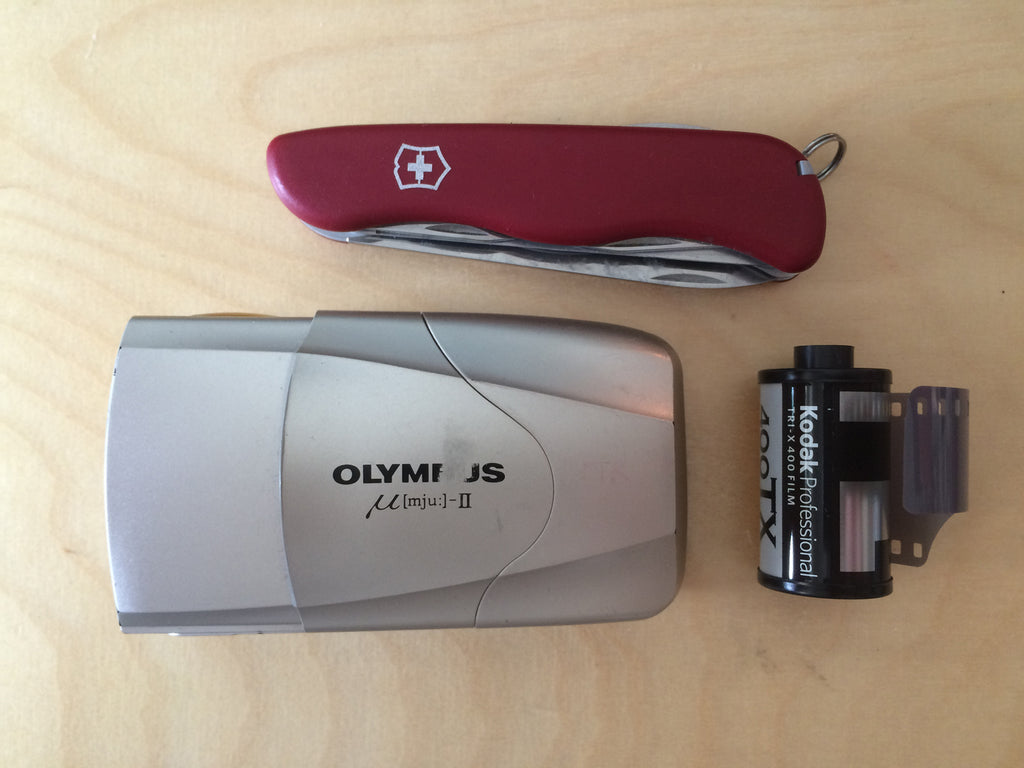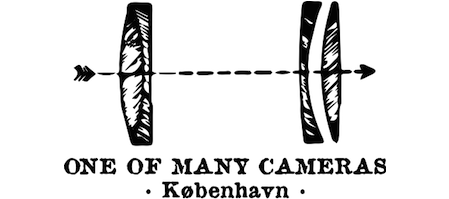This weekend, one of our costumers (and fellow bearded viking) dropped by to stock up on film, for his trip to Mexico. We got to talking about film speeds, and I told him about how I love to rate Portra 160 as 100, and push Tri-X 400 to 1600. Unfortunatly, he had a point'n'shoot, where playing around with alternative ratings is impossible. Or is it?

I treat Portra 160 as 100, but develop it at standard timing. It's not pushing, it's simply overexposing. I do this because I love how the film opens up when exposured a little "too much" - which is basically open to interpretation. I get a little more detail in the shadow areas, and more importantly I get richer and more saturated colours. The "flat" signature of colour-negative remains, but I get a little more warmth, which I usually prefer when shooting Portra.
I often shoot Tri-X as 1600. These I actually push, adjusting the developing times accordingly so the exposure ends up right. I do this, because I like the heavy contrast, and rough grain - especially with 135-film. Grain is one of the big reasons I love shooting film - nothing beats the grain on properly enlarged film prints. Nothing.

In any of these two cases I am avoiding box speed, which is easy if you have a manual camera - like most slrs and rangefinders, but often impossible when using a more automated camera, like a point'n'shoot. Or is it?
This particular customer was bringing his lovely Ricoh GR1 on vacation, and while the small Ricohs are wonderful cameras, they don't allow you to set a custom film speed. This is where DX hacking comes into the picture. DX is the code seen on the side of 35mm film. If the camera has a DX-reader (typically two lines of copper contacts) it can read all kinds of information from the film, and set it automatically. This is what fully automated cameras rely on, when no manual settings are available. Cameras like the Ricoh GR1, or in my case, the Olympus mju II. The code consists of two lines of black or blank squares, which are binary values the camera can understand. We are going to discuss the upper line, marked with a red square on the image. This line is telling the camera what the native speed of the film is. The sequence of black squares can be interpretated into iso/asa-values, that us humans can understand. The following image shows some of the different codes used for different speeds, you can find the complete list on Wikipedia.

Let's say I want to shoot some Tri-X in my Olympus mju II. The camera does not have a setting for film-speed, and is automatically set based on the DX code. So if I want to rate it at, let's say 1600, I have to fool the camera into thinking that I've been feeding it with native 1600-speed film. I can do this, by manipulating with the DX code. Looking at the chart, I can tell that the difference between the 400 code printed on the film, and the 1600 code I want to achive, is only one black square. Since the black square is only made up of a thin layer of black paint, I'm going to scrape it off to alter the code.

I don't know exactly how precise you would have to be, when scraping off the paint. I try to do as well a job as I can, but I would think a sloppy job would probably do the trick as well. I imagine the standard electrical contacts don't need too much precision, but if you have a camera featuring optical DX reading, you might want to be more careful.

This is the final result. When I pop it into my trusty Canon eos 3, I can see the camera recognises the film as a native 1600-speed film. If I had to paint on some black squares, I would probably use a marker like a Sharpie, although I have never needed to.
I have seen people selling custom DX stickers on ebay. They would be useful when wanting to shoot Cinestill 800T, which doesn't have DX-coding at all, in a point'n'shoot.
A final note: There is a difference in simply rating a film differently, as a method of over/underexposing, and choosing shoot at a different speed with the purpose of pushing/pulling. Negative film can be overexposed a whole lot, while still keeping it's detailt intact, but underexposing is dangerous. If you make the hack I just made, with the intention of pushing 2 stops, you have to remember to compensate when developing / tell your lab-guy. If you shoot your films at 1600, but develop them as shot at 400, you'll be losing 2 stops of light. Digital cameras handle underexposure way better, but that's another discussion.
